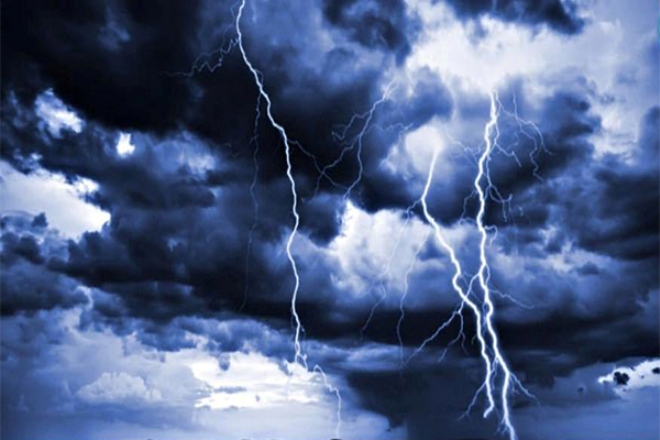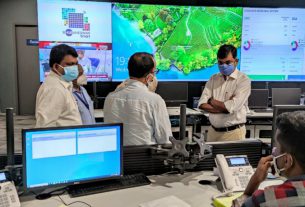Bhubaneswar: The Odisha Government has been able to reduce the number of deaths due to lightning by more than 31% by effectively using the early warning communication system to alert the people about the upcoming thunderstorm and lightning, said an official release.
According to a communiqué issued by the Special Relief Commissioner (SRC), as many as 401 lightning deaths were reported during the year 2015-16 and 401 deaths during 2016-17.
The number of deaths due to lightning went up to 465 during the year 2017-18. However, it is relieving to note that the death figure has come down to 320 during the year 2018-19 registering a decrease of more than 31%, it said.
The State Relief Organisation and the Odisha State Disaster Management Authority (OSDMA) have taken a number of steps like organising special campaign to raise awareness among the people about the lightning hazard and the safety measures for saving lives from the lightning incidents, to arrest the increasing trend of lightning deaths in the State.
The campaign includes printing and distribution of posters for display in all the villages and schools in the State, awareness programmes organised at school and community levels, engagement with media including social media for wider circulation of the awareness messages and so on.
Most importantly, a MoU has been signed between State Government and the Earth Networks of the USA to get the advance information about the upcoming lightning with a view to alerting the citizens to enable them to take the required precautionary measures for saving their lives.
As per the MoU, Earth Networks has set up six lightning sensors across Odisha and is providing information on a regular basis to OSDMA about probable lightning incidents, 30-40 minutes in advance, along with the map briefly showing the area where the lightning is likely to strike.
The information with map thus received from Earth Networks is quickly processed on GIS platform in OSDMA and the geographic coordinates of the probable area of lightning strike is communicated to the State Emergency Operations Centre for sending SMS alerts to the people of that area through Location Based Alert System (LBAS).
The SMS alerts are sent through LBAS to the people who are present in the area likely to be affected by the lightning strike. The entire operations from receipt of the information from Earth Networks till despatch of the SMSes are completed 2-3 minutes.
The State Emergency Operations Centre is functioning in the office of the Special Relief Commissioner, Rajiv Bhawan, Bhubaneswar on 24×7 basis.
OSDMA has also collaborated with the Regional Integrated Multi-Hazard Early Warning System for Africa and Asia (RIMES), Thailand for developing an integrated Decision Support System (DSS) for providing real time watch, alert, and warning information for different hazards like heat wave, lightning, droughts, Ocean State Information and floods.
An application “SATARK” (System for Accessing, Tracking and Alerting Disaster Risk Information Based on Dynamic Risk Knowledge) has been developed.
The citizens are downloading this app and using the same to get early alerts about lightning incidents.
Apart from the above, an intelligent and automated system known as ‘Outdoor Alerting System’ has been installed in 14 most lightning vulnerable blocks of the state for quickly disseminating the warning to citizens.
The siren installed in this system will automatically blow before approach of any lightning and severe weather, which will be audible to the people in the vicinity.
People getting such siren alerts may inform others through different modes. The system will be expanded in future. Statistics indicate that about 85% of total deaths due to lightning occur during the months from May to September.
People should remain careful these days, pay due attention to the alert messages being received by them and sincerely take necessary precautions to avoid any mishap from lightning.


